Abstract
Studies were performed in anesthetized opossums to investigate the influence of successive vagal stimuli on esophageal contractions. Mechanical activity was recorded manometrically 5 cm above the lower esophageal sphincter. Contractions in the esophagus were evoked by electrical stimuli of 2.5 mA, and 1-ms pulse duration applied to the cervical vagi, at various train durations and frequencies. Paired or multiple stimuli of 1-s train length were also tested at different interstimulus intervals (ISI). Paired stimuli at an ISI of less than or equal to 3 s and at a frequency of less than or equal to 10 Hz showed refractoriness, i.e., the contractions to the first stimulus inhibited the contraction to the second stimulus. A frequency of 50 Hz showed initial inhibition, i.e., the second stimulus inhibited the contraction to the first stimulus. Repetitive stimuli applied at a rate of 8/min (ISI 6.5 s) evoked contractions to each stimulus. At 15/min, every second or third contraction was inhibited. With stimuli applied at 30/min, contractions occurred only in response to the first and/or the last stimulus; depending upon the frequency of vagal stimulation. The intervening stimuli did not evoke any contractions. A long train stimulus produced an initial, a terminal, or both contractions depending on the stimulation value. These studies show that (a) vagal efferent stimulation causes initial inhibition and refractoriness in the esophageal smooth muscle; (b) the degree of initial inhibition increases with increasing frequency of stimulation; (c) the occurrence of contractions only at the onset and the end of a long train stimulus may be due to the influence of initial inhibition and refractoriness.
Full text
PDF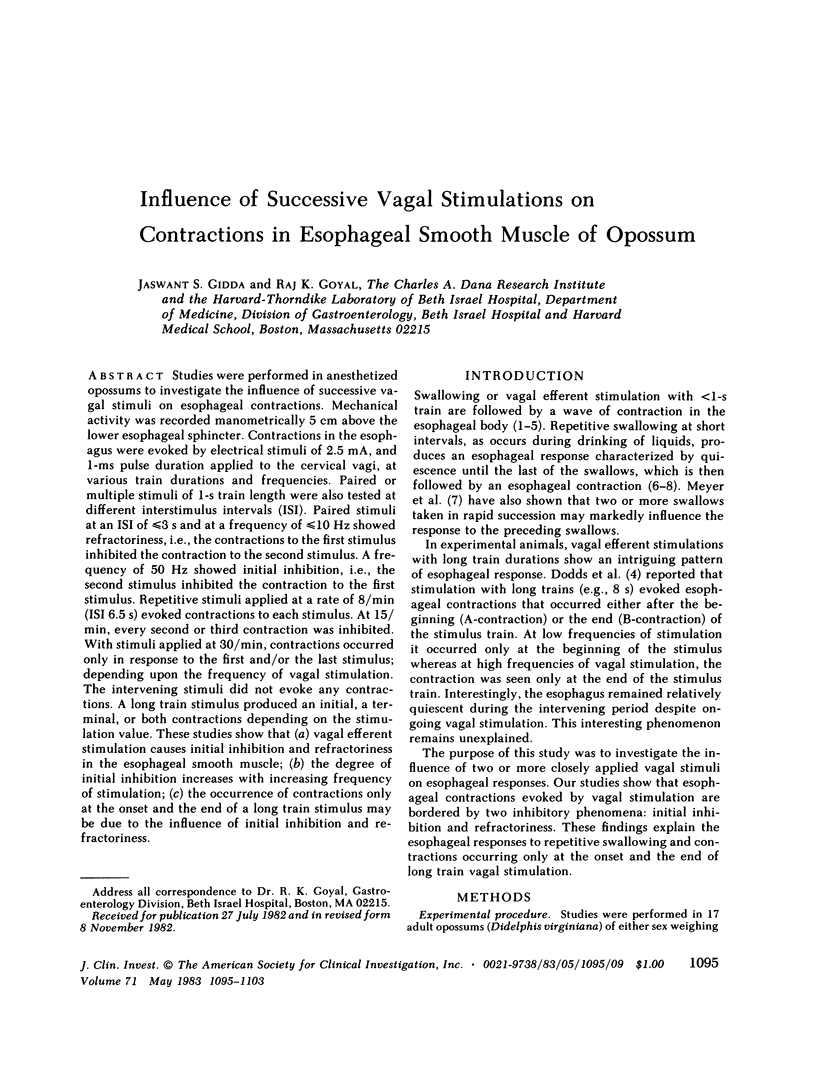
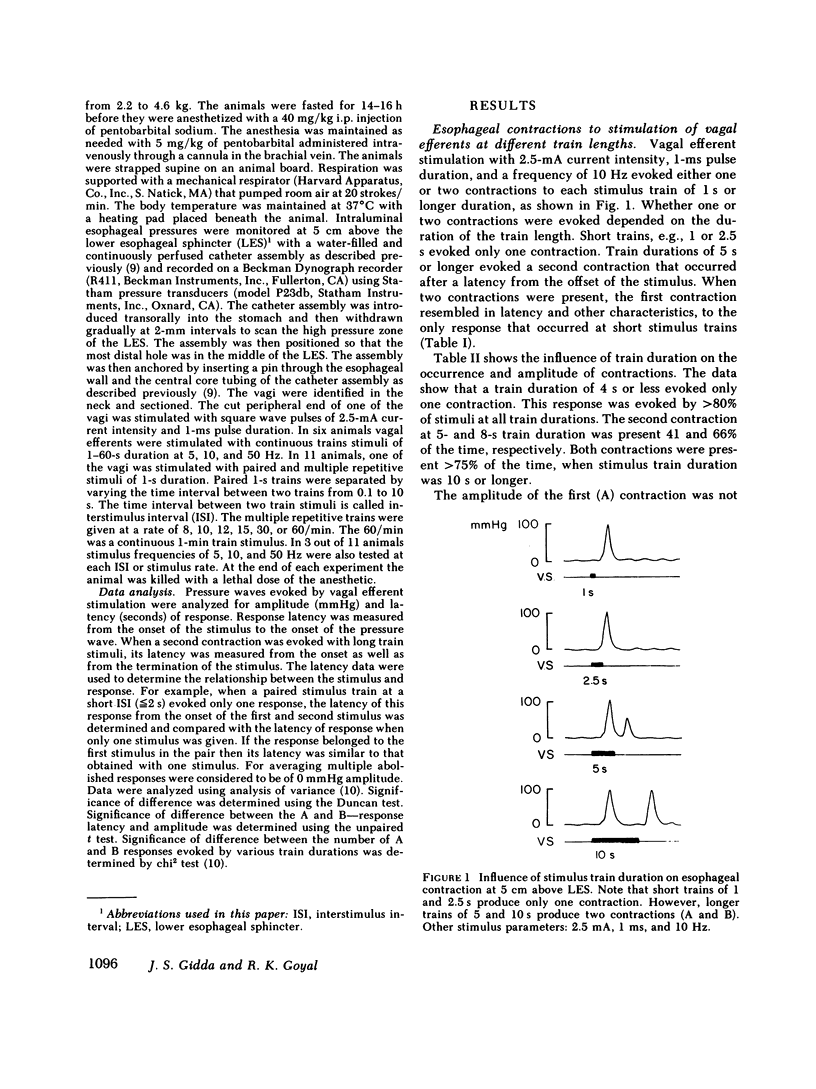
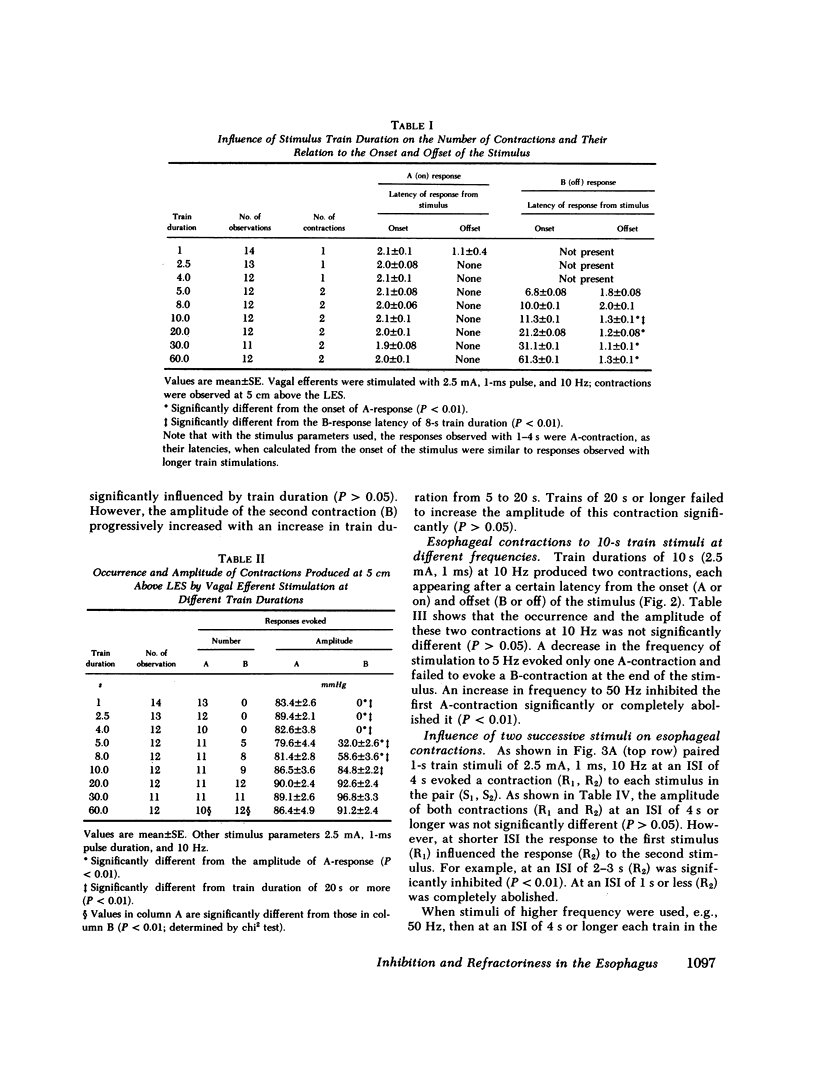
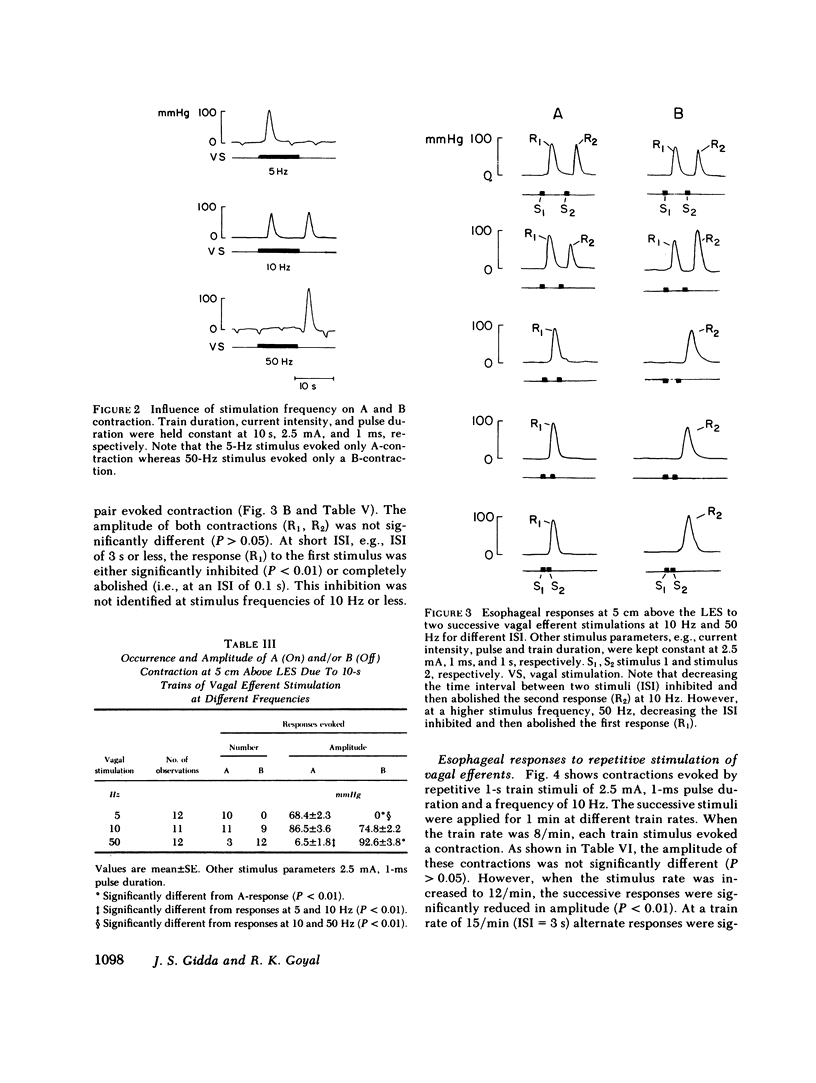
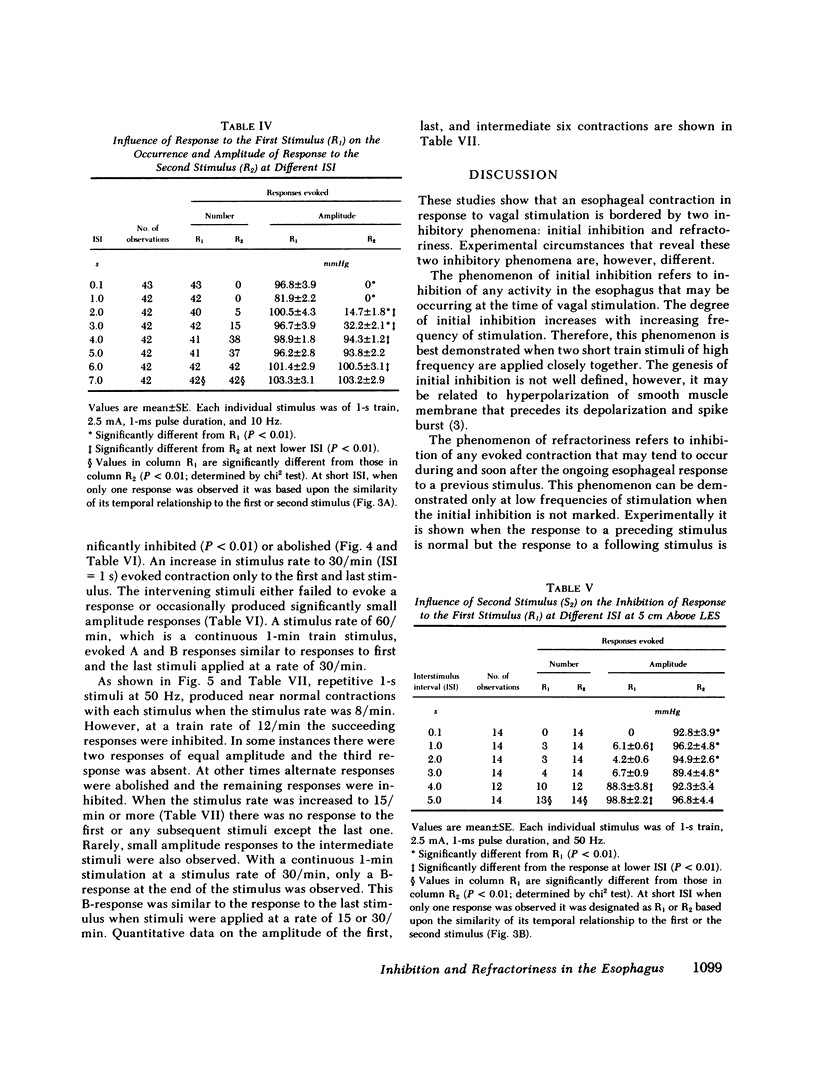
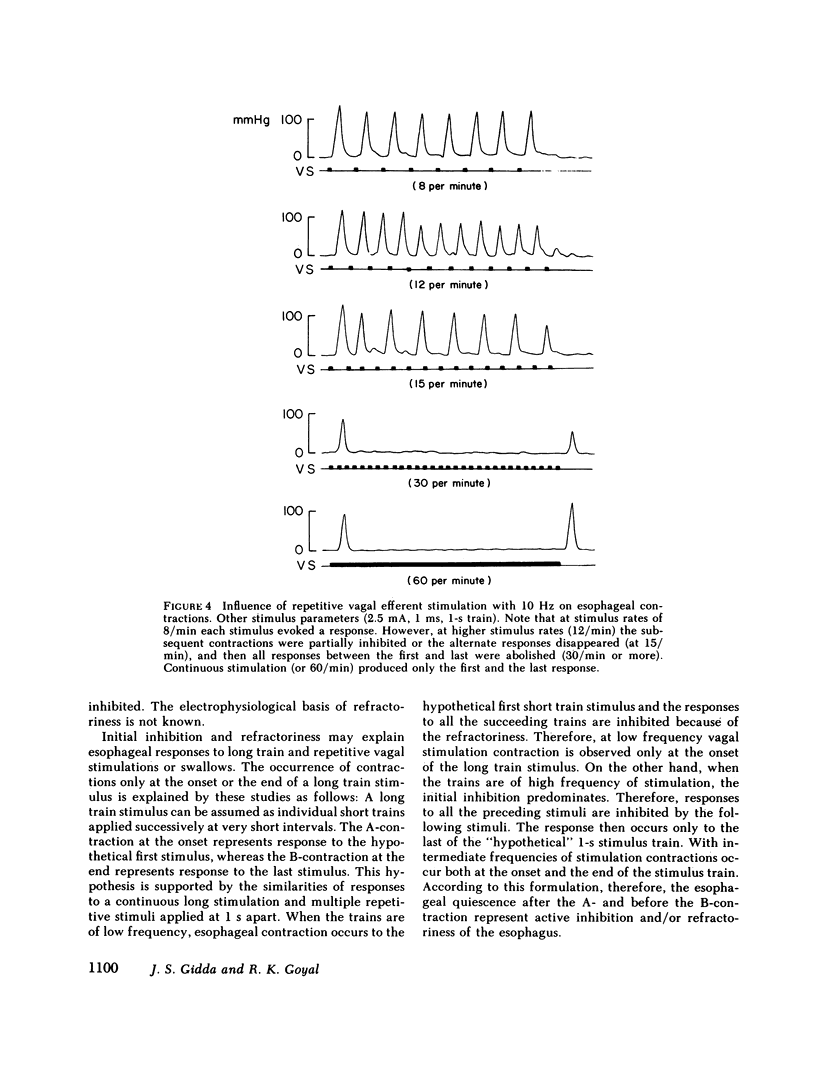
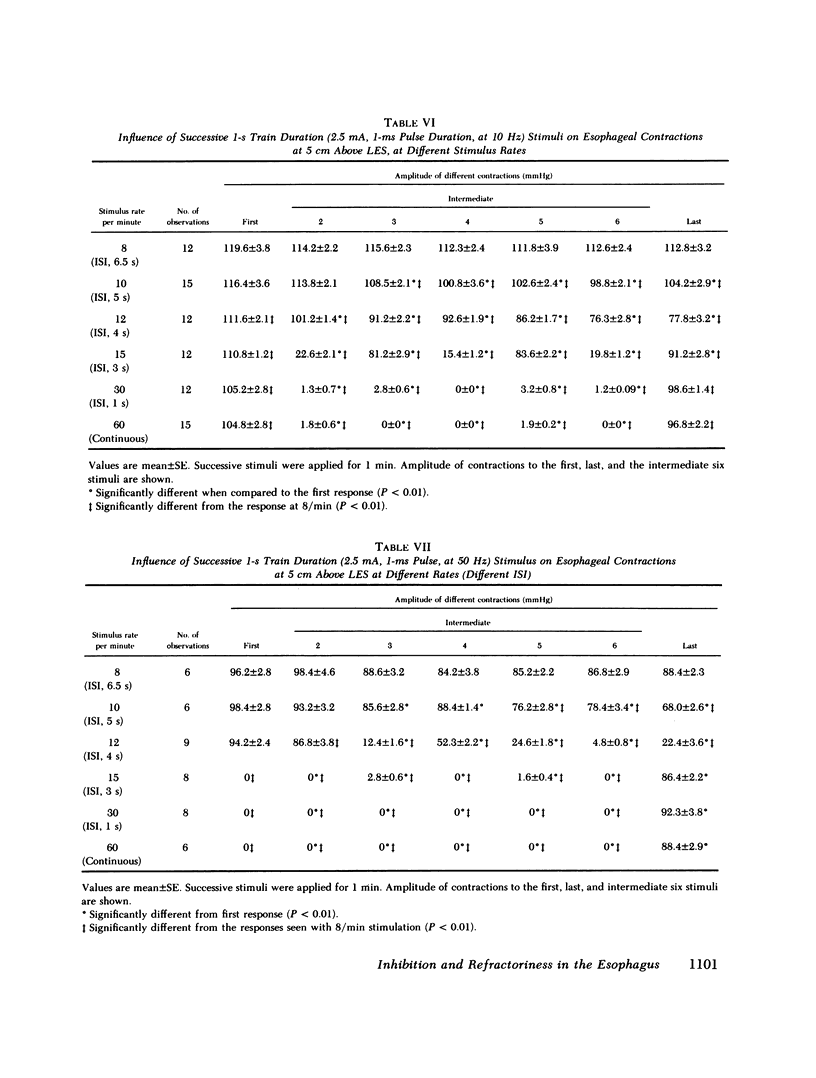
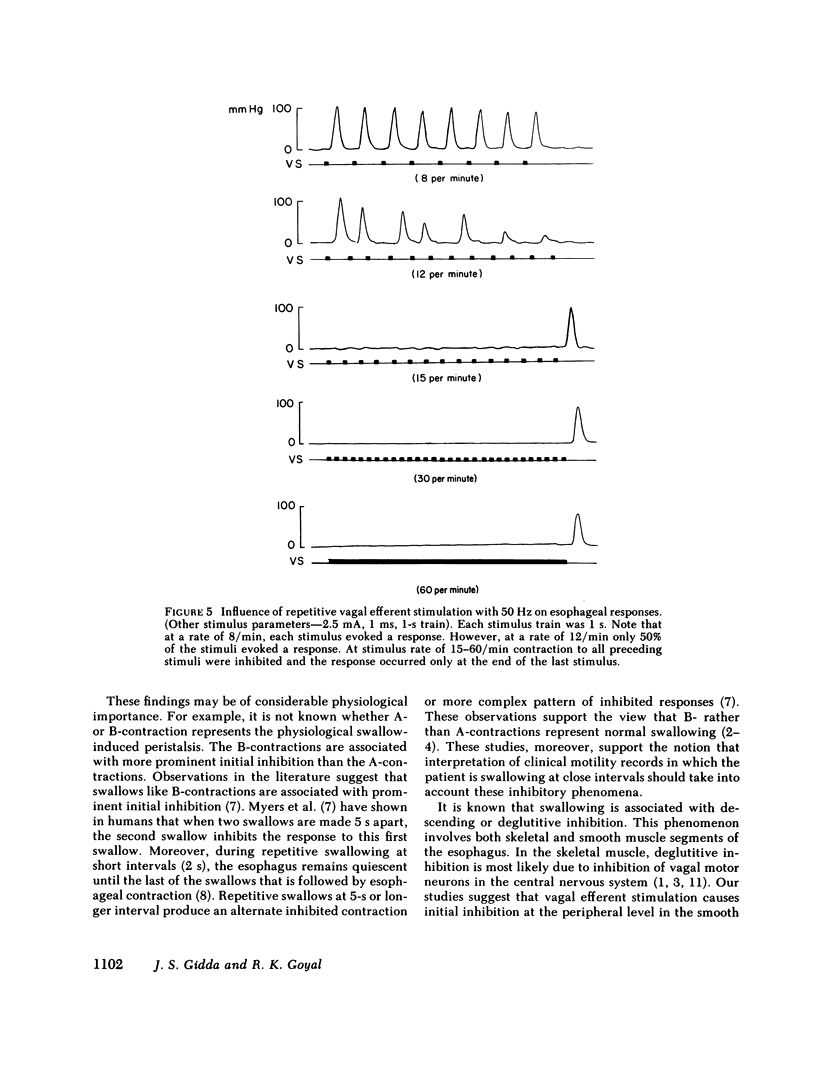
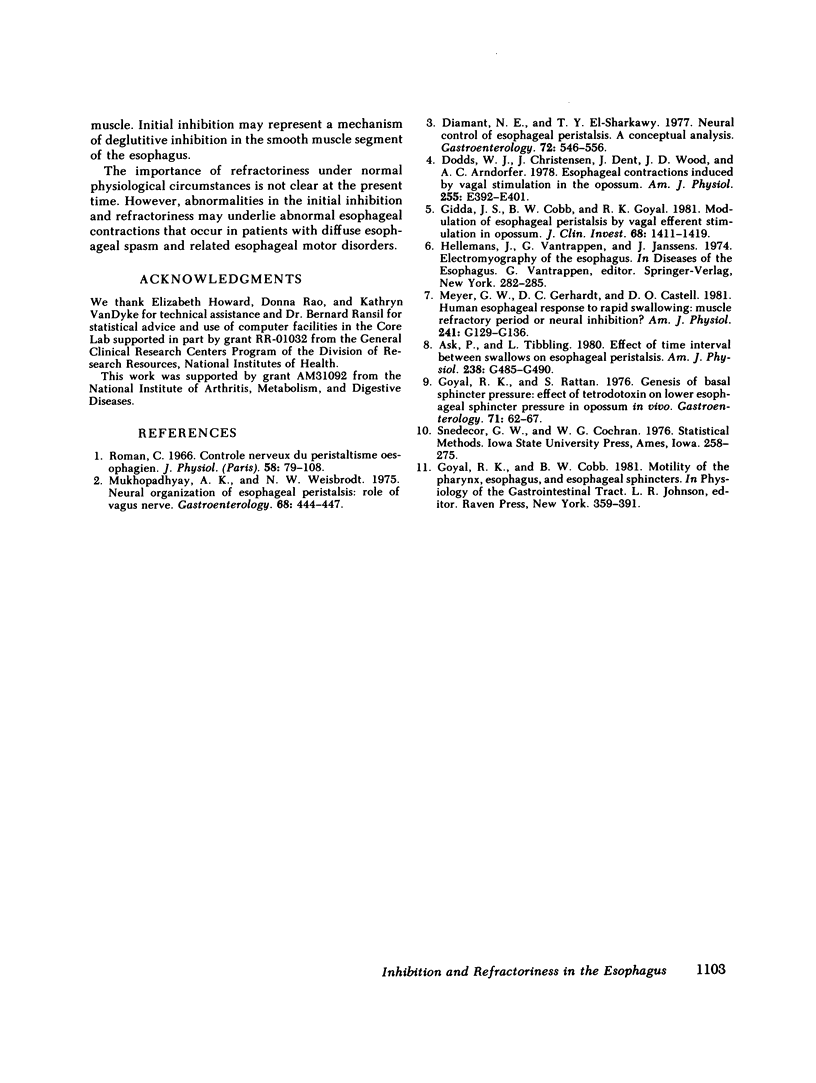
Selected References
These references are in PubMed. This may not be the complete list of references from this article.
- Ask P., Tibbling L. Effect of time interval between swallows on esophageal peristalsis. Am J Physiol. 1980 Jun;238(6):G485–G490. doi: 10.1152/ajpgi.1980.238.6.G485. [DOI] [PubMed] [Google Scholar]
- Diamant N. E., El-Sharkawy T. Y. Neural control of esophageal peristalsis. A conceptual analysis. Gastroenterology. 1977 Mar;72(3):546–556. [PubMed] [Google Scholar]
- Dodds W. J., Christensen J., Dent J., Wood J. D., Arndorfer R. C. Esophageal contractions induced by vagal stimulation in the opossum. Am J Physiol. 1978 Oct;235(4):E392–E401. doi: 10.1152/ajpendo.1978.235.4.E392. [DOI] [PubMed] [Google Scholar]
- Gidda J. S., Cobb B. W., Goyal R. K. Modulation of esophageal peristalsis by vagal efferent stimulation in opossum. J Clin Invest. 1981 Dec;68(6):1411–1419. doi: 10.1172/JCI110392. [DOI] [PMC free article] [PubMed] [Google Scholar]
- Goyal R. K., Rattan S. Genesis of basal sphincter pressure: effect of tetrodotoxin on lower esophageal sphincter pressure in opossum in vivo. Gastroenterology. 1976 Jul;71(1):62–67. [PubMed] [Google Scholar]
- Meyer G. W., Gerhardt D. C., Castell D. O. Human esophageal response to rapid swallowing: muscle refractory period or neural inhibition? Am J Physiol. 1981 Aug;241(2):G129–G136. doi: 10.1152/ajpgi.1981.241.2.G129. [DOI] [PubMed] [Google Scholar]
- Mukhopadhyay A. K., Weisbrodt N. W. Neural organization of esophageal peristalsis: role of vagus nerve. Gastroenterology. 1975 Mar;68(3):444–447. [PubMed] [Google Scholar]
- Roman C. Contrôle nerveux du péristaltisme oesophagien. J Physiol (Paris) 1966 Jan-Feb;58(1):79–108. [PubMed] [Google Scholar]


